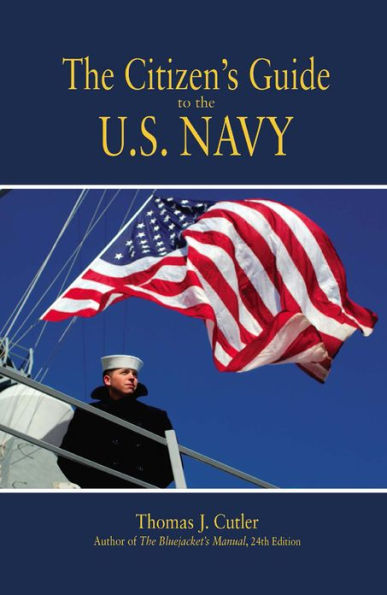The Citizen's Guide to the U.S. Navy
Today’s Navy is a massive and complex organization, with hundreds of ships, thousands of aircraft, hundreds of thousands of people, and an annual budget in the billions of dollars that make the U.S. Navy a powerful and important component of the American defense establishment, playing a vital role in maintaining our national security, protecting us against our enemies in time of war, and guarding our economic lifelines and supporting our foreign policy in peacetime. Despite its obvious importance, most Americans know very little about their Navy, and learning about it has been a daunting task. Until now. Derived from another Naval Institute Press book by the same author, NavCivGuide: A Handbook for Civilians in the United States Navy (which is used by civilians who work for the Department of the Navy), this informative book is a highly accessible guide that explains the strange ways of the Navy in terms that non-Sailors can understand. In ten short chapters, the author reveals such things as the many titles that military people have, the various alphanumeric designations that military personnel use to identify and distinguish themselves, the organization of the Navy and the Department of Defense, the origins and practices of such things as saluting, flag etiquette, side boys, and odd language (such as “aye-aye”), and an explanation of the many missions of the Navy. Also included is an introduction to the Navy’s colorful history, a primer on the various ships and aircraft that make up today’s fleet, a guide to “reading” a uniform, and the demystification of such things as the phonetic alphabet and military time. Designed to be an easy read for those who want the whole story, The Citizen’s Guide to the Navy is also a useful reference work. Each chapter ends with a section called “QuickRefs,” which are lists of the essential facts presented in the chapter itself. While not everyone need be an expert on the Navy, there is a middle ground that this book serves by providing a readable, edifying, and often entertaining explanation of this important but sometimes mysterious branch of the U.S. armed forces.
1106655201
The Citizen's Guide to the U.S. Navy
Today’s Navy is a massive and complex organization, with hundreds of ships, thousands of aircraft, hundreds of thousands of people, and an annual budget in the billions of dollars that make the U.S. Navy a powerful and important component of the American defense establishment, playing a vital role in maintaining our national security, protecting us against our enemies in time of war, and guarding our economic lifelines and supporting our foreign policy in peacetime. Despite its obvious importance, most Americans know very little about their Navy, and learning about it has been a daunting task. Until now. Derived from another Naval Institute Press book by the same author, NavCivGuide: A Handbook for Civilians in the United States Navy (which is used by civilians who work for the Department of the Navy), this informative book is a highly accessible guide that explains the strange ways of the Navy in terms that non-Sailors can understand. In ten short chapters, the author reveals such things as the many titles that military people have, the various alphanumeric designations that military personnel use to identify and distinguish themselves, the organization of the Navy and the Department of Defense, the origins and practices of such things as saluting, flag etiquette, side boys, and odd language (such as “aye-aye”), and an explanation of the many missions of the Navy. Also included is an introduction to the Navy’s colorful history, a primer on the various ships and aircraft that make up today’s fleet, a guide to “reading” a uniform, and the demystification of such things as the phonetic alphabet and military time. Designed to be an easy read for those who want the whole story, The Citizen’s Guide to the Navy is also a useful reference work. Each chapter ends with a section called “QuickRefs,” which are lists of the essential facts presented in the chapter itself. While not everyone need be an expert on the Navy, there is a middle ground that this book serves by providing a readable, edifying, and often entertaining explanation of this important but sometimes mysterious branch of the U.S. armed forces.
18.99
In Stock
5
1

The Citizen's Guide to the U.S. Navy
336
The Citizen's Guide to the U.S. Navy
336
18.99
In Stock

Product Details
| ISBN-13: | 9781612510996 |
|---|---|
| Publisher: | Naval Institute Press |
| Publication date: | 04/15/2012 |
| Series: | Blue & Gold Professional Library |
| Sold by: | Barnes & Noble |
| Format: | eBook |
| Pages: | 336 |
| File size: | 5 MB |
About the Author
From the B&N Reads Blog
